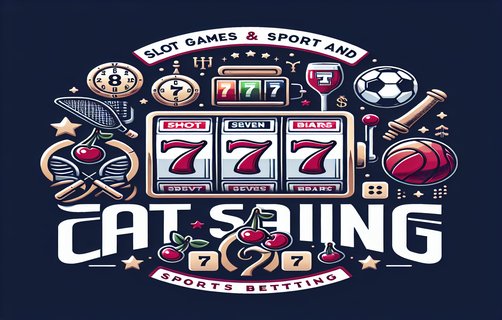The Art of Decision Making in Poker: Navigating the Nuances of Gameplay
पॉकर में निर्णय लेने की कला: गेमप्ले के सूक्ष्मताओं को नेविगेट करना
In poker, strategic decision-making is pivotal to success. Players are constantly confronted with choices that can define the outcome of a session, ranging from folding to calling, raising, or bluffing. Each option carries its implications, especially when considering folding too passively. This approach might save chips momentarily, but it also risks losing out on valuable opportunities to gain chips.
Understanding opponent pressure behavior is crucial in developing an effective strategy. Observing how opponents react to betting can reveal their tendency to bluff or play aggressively. This insight allows a player to adjust their game plan accordingly, whether it be to call, fold, or raise, based on their read of the situation.

Chipsafety is another critical aspect to consider during gameplay. Managing one's stack effectively can mean the difference between folding to conserve chips or risking them for a favorable hand. Every player has their own threshold for risk, and it’s vital to operate within this framework while remaining adaptable.
Hand draw odds play a significant role in decision-making. Understanding the probabilities associated with hitting draws can influence whether a player should pursue a hand or let it go. The art of calculating implied odds, which takes into account future bets when hitting a draw, empowers players to make calculated risks that may yield significant returns.
Stakes also dictate the style of play. Low-stakes games allow for a different approach compared to high-stakes pits, where the pressure mounts, and players are more likely to employ aggressive strategies. Adapting one’s gameplay to accommodate the stakes is essential for maximizing potential returns.

Bluff traps can provide a powerful weapon in an arsenal of strategies. Setting up a situation where one creates a false sense of security in an opponent can lead to opportunities for significant pots. However, it’s important to recognize the right moments to employ these tactics without becoming too predictable. The balance between aggression and caution is key in executing successful bluffs.
In conclusion, mastering poker requires a multifaceted approach to decision making that encompasses various factors from folding strategies to bluffing. Players should develop a keen sense of opponent behavior, manage their chips wisely, calculate odds intelligently, adapt to different stakes, and find opportune moments to execute bluffs. By refining these elements, success at the table becomes much more attainable, leading to a deeper understanding of the intricate dance that is poker.
पॉकर में, रणनीतिक निर्णय लेना सफलता के लिए महत्वपूर्ण है। खिलाड़ी लगातार ऐसे निर्णयों का सामना करते हैं जो सत्र के परिणाम को परिभाषित कर सकते हैं, जैसे फोल्ड करना, कॉल करना, रेज़ करना, या ब्लफ करना। प्रत्येक विकल्प के अपने निहितार्थ होते हैं, विशेष रूप से जब बहुत अधिक सौम्य फोल्डिंग पर विचार किया जा रहा हो। यह दृष्टिकोण क्षण में चिप्स को बचा सकता है, लेकिन यह मूल्यवान अवसरों को भी खोने का जोखिम उठाता है।
विपक्षी दबाव व्यवहार को समझना एक प्रभावी रणनीति विकसित करने में महत्वपूर्ण है। यह देखना कि प्रतिकूल खिलाड़ी दांवों पर कैसे प्रतिक्रिया करते हैं, उनके ब्लफिंग या आक्रामक खेल खेलने की प्रवृत्ति को प्रकट कर सकता है। इस अंतर्दृष्टि से एक खिलाड़ी को अपनी खेल योजना को तदनुसार समायोजित करने की अनुमति मिलती है, चाहे वह किसी स्थिति की अपनी पढ़ाई के आधार पर कॉल करने, फोल्ड करने या रेज़ करने के लिए हो।
चिप्सafety भी गेमप्ले के दौरान विचार करने का एक महत्वपूर्ण पहलू है। किसी के स्टैक का प्रभावी ढंग से प्रबंधन करना फोल्ड करने या उन्हें एक फायदेमंद हाथ के लिए जोखिम में डालने के बीच के अंतर को बदल सकता है। प्रत्येक खिलाड़ी के लिए जोखिम का अपना थRESHOLD होता है, और यह आवश्यक है कि वह इस ढांचे के भीतर कार्य करे, जबकि अनुकूल बनने के लिए तैयार रहे।
हैंड ड्रॉ ऑड्स निर्णय लेने में एक महत्वपूर्ण भूमिका निभाते हैं। हिट ड्रॉ पर संभावनाओं को समझना यह प्रभावित कर सकता है कि किसी खिलाड़ी को किसी हाथ का पीछे धकेलना चाहिए या छोड़ देना चाहिए। IMPLIED ODDS की गणना करने की कला, जो भविष्य के दांवों को ड्रॉ पर हिट करने के साथ ध्यान में रखती है, खिलाड़ियों को गणना किए गए जोखिम उठाने में सक्षम बनाती है जो महत्वपूर्ण लाभ ला सकती हैं।
स्टेक्स भी खेलने के तरीके को प्रभावित करते हैं। कम स्टेक गेम उच्च स्टेक पिट की तुलना में अलग तरह के दृष्टिकोण की अनुमति देते हैं, जहां दबाव बढ़ता है, और खिलाड़ी अधिक आक्रामक रणनीतियों को अपनाने की संभावना रखते हैं। विभिन्न स्टेकों के साथ एक की गेमप्ले को अनुकूलित करना अत्यावश्यक है।
ब्लफ ट्रैप एक रणनीति के शस्त्रागार में एक शक्तिशाली हथियार प्रदान कर सकता है। ऐसा स्थिति स्थापित करना जहाँ कोई प्रतिकूल खिलाड़ी में झूठे आत्मविश्वास का अनुभव करने का कारण बनता है, महत्वपूर्ण पॉट्स के अवसरों की ओर ले जा सकता है। हालाँकि, यह पहचानना महत्वपूर्ण है कि इन तकनीकों को सही क्षणों पर कब लागू किया जाए, बिना बहुत पूर्वानुमानित हुए। आक्रामकता और सतर्कता के बीच संतुलन सफल ब्लफ्स को निष्पादित करने में कुंजी है।
अंत में, पोकर में महारत हासिल करने के लिए निर्णय लेने के लिए एक बहु-आयामी दृष्टिकोण की आवश्यकता होती है, जो फोल्डिंग रणनीतियों से लेकर ब्लफिंग तक के कई कारकों को कवर करता है। खिलाड़ियों को विपक्षी व्यवहार की अच्छी समझ विकसित करनी चाहिए, अपनी चिप्स को बुद्धिमानी से प्रबंधित करना चाहिए, सही तरीके से ऑड्स की गणना करनी चाहिए, विभिन्न स्टेक में अनुकूलित रहना चाहिए और ब्लफ के कार्यान्वयन के लिए सही क्षणों को खोज लेना चाहिए। इन तत्वों को परिष्कृत करके, टेबल पर सफलता हासिल करना बहुत अधिक प्राप्य हो जाता है, जो पोकर के जटिल नृत्य की गहरी समझ की ओर ले जाता है।

comments
AceHigh77
This article highlights some crucial points about decision-making in poker.
BluffMaster
I found the section on opponent pressure behavior particularly insightful.
Chip_Expert
Great breakdown of the risk management strategies in poker.
RaiseOrFold
The discussion on bluff traps is spot on! Can't wait to try it out.
LuckBeALady
Interesting angles on chip safety and evolving gameplay.
PotOddsPro
Simply loved the insights on hand draw odds!